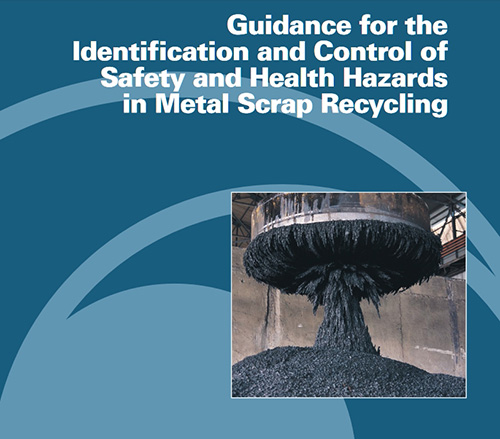
Occupational Safety and Health Administration (OSHA) of the US developed the in Metal Scrap Recycling. The Guidance deals with various types of hazards that employees who are engaged in the scrap metal recycling may encounter. It describes the consequences which may be caused by these hazards. The Guidance also gives the ways of the workplace equipment and work process organization to avoid dangerous health effects.
The document is not a legislative act such as OSHA Standards and the Occupational Safety and Health Act. It is a set of recommendations that should be followed by the workers, employers, and other persons related to the scrap recycling safety. In addition, all legislation pertaining to this area must be strictly observed. Throughout the text of this guide, there are a lot of references to the OSHA Standards and other official documents governing the safety issues in the scrap processing. All the necessary legislation can also be found on the website https://www.osha.gov
The guide contains the following sections:
The introduction defines the audience of the Guidance. It also emphasizes the importance of the document and how it can be useful. The section specifies a range of the issues covered in this guide. It mentions the main legislative acts on the scrap processing safety and types of hazards depending on their cause.
The section of Commonly Recycled Metals and Their Sources tells us about the most common ferrous and non-ferrous metals and major sources that include such metals. The ferrous scrap includes iron and steel. The most popular non-ferrous metals for recycling are aluminum, copper, zinc, magnesium, lead, tin, and nickel. The category also includes precious metals (gold and silver) and exotic metals (cobalt, titanium, etc.) The common sources of the ferrous metals are:
The main sources of non-ferrous metals are
The scrap quality and its origin are also important aspects. Harmful impurities and chemicals, as well as radioactive contamination, can cause harm to the personnel engaged in the scrap processing.
The section of Common Recycling Processes, Hazards and Related Controls describes the wide range of processes used for the recycling. Besides, the section defines the hazards that can affect employees and reflects the possible consequences. It also provides concrete steps that employers and staff must take to avoid the tragic effects.
The Guidance indicates the following categories of operations used within the scrap recycling process:
Each category has its own list of hazards which can happen. In the category, you can find a real-life example or some examples. It is a Case History with the description of the accident that occurred due to non-compliance with safety rules. After any Case History, you can find clear instructions on how to avoid the tragic occasion. The hazard is also accompanied by the list of Osha Standards and sources of additional information related to the given case. You can find such Case Histories in the other sections of the Guidance too.
The section Recognizing and Controlling Hazards deals with the hazards that may arise when working with some metals due to their toxic effects. The section also indicates the dangers associated with the use of metalworking fluids and other chemicals as well as radioactive materials.
Here you can find the Table 1 with OSHA-Regulated Toxic Metals as well as a detailed description of the hazards related to the processing of
The section contains the main stages of the above-mentioned toxic metals recycling and health damage that may be caused. Here you can also find OSHA Standards for the toxic metal processing and precaution methods.
The other metals can also be dangerous. The processing technologies of such metals or their scrap sources cause hazards for employees. For example, it is the recycling of lead-acid batteries for antimony. The section contains the processing features of such metals (copper, silver, manganese, aluminum, tin, etc.) and draws attention to the risks of working with them.
The document also focuses on radiation hazard. Radioactive scrap can get into the recycling process. The best radiological protection is the installation of radiation monitoring systems at the scrap recycling enterprises.
The Guidance defines a lot of hazards that can lurk employees at the scrap processing. Personnel may be poisoned with chemicals, burned, suffer from an explosion, poisonous gas emissions, get injured during the mechanical scrap processing such as cutting, grinding, pressing, etc.
Besides, it includes the ways of hazards control, including properly equipped workplace, safety trainings and instructions as well as personal protection of employees and their regular medical examinations. Here you can also find the detailed description of engineering controls and work practice controls together with the required personal protective equipment to reduce the impact of the hazards.
The Guide has an appendix with the Exposure Limits for Selected Metals. At the end of the document, you can see information about the Osha assistance including safety and health programmes, consultation services, training and education, state programmes, voluntary protection and other programmes in addition to the Osha contact details.
Download Guidance for theIdentification and Control of Safety and Health Hazardsin Metal Scrap Recycling